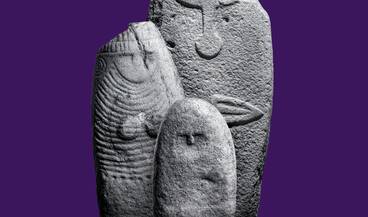Aujourd’hui
10:00 - 17:00
10:00 - 17:00
mardi jusqu’à mercredi 10:00 - 17:00
jeudi 10:00 - 19:00
vendredi jusqu’à dimanche 10:00 - 17:00
lundi fermé
mardi jusqu’à mercredi et vendredi 10:00 - 18:00
jeudi 10:00 - 19:00
samedi jusqu’à lundi fermé
La bibliothèque est fermée du 20.1.2025 au 5.1.2026
Aujourd’hui 10:00 - 17:00
28.12.2025 10:00 - 17:00
29.12.2025 10:00 - 17:00
30.12.2025 10:00 - 17:00
Saint-Sylvestre 31.12.2025 10:00 - 17:00
Nouvel an 01.01.2026 10:00 - 17:00
Saint Berchtold 02.01.2026 10:00 - 17:00
Vendredi Saint 03.04.2026 10:00 - 17:00
Samedi Saint 04.04.2026 10:00 - 17:00
Pâques 05.04.2026 10:00 - 17:00
Lundi de Pâques 06.04.2026 10:00 - 17:00
Sechseläuten 20.04.2026 fermé
Fête du travail 01.05.2026 10:00 - 17:00
Ascension 14.05.2026 10:00 - 17:00
Pentecôte 24.05.2026 10:00 - 17:00
Lundi de Pentecôte 25.05.2026 10:00 - 17:00
Fête nationale Suisse 01.08.2026 10:00 - 17:00
accessibility.openinghours.special_opening_hours.link
Afficher tout10:00 - 17:00
mardi jusqu’à mercredi 10:00 - 17:00
jeudi 10:00 - 19:00
vendredi jusqu’à dimanche 10:00 - 17:00
lundi fermé
mardi jusqu’à mercredi et vendredi 10:00 - 18:00
jeudi 10:00 - 19:00
samedi jusqu’à lundi fermé
La bibliothèque est fermée du 20.1.2025 au 5.1.2026
Aujourd’hui 10:00 - 17:00
28.12.2025 10:00 - 17:00
29.12.2025 10:00 - 17:00
30.12.2025 10:00 - 17:00
Saint-Sylvestre 31.12.2025 10:00 - 17:00
Nouvel an 01.01.2026 10:00 - 17:00
Saint Berchtold 02.01.2026 10:00 - 17:00
Vendredi Saint 03.04.2026 10:00 - 17:00
Samedi Saint 04.04.2026 10:00 - 17:00
Pâques 05.04.2026 10:00 - 17:00
Lundi de Pâques 06.04.2026 10:00 - 17:00
Sechseläuten 20.04.2026 fermé
Fête du travail 01.05.2026 10:00 - 17:00
Ascension 14.05.2026 10:00 - 17:00
Pentecôte 24.05.2026 10:00 - 17:00
Lundi de Pentecôte 25.05.2026 10:00 - 17:00
Fête nationale Suisse 01.08.2026 10:00 - 17:00
accessibility.openinghours.special_opening_hours.link
Afficher toutFilm
Hazelnut shells, loaves of bread, balls of thread, shoes...
The banality of common objects becomes an asset when they reach us, almost intact, after having been buried under water for thousands of years. The cause of this miracle is the water that preserves organic matter. Around the Alpine arc, during the Neolithic period, populations established their houses on piles. They have left us a unique heritage, which can be dated with astonishing precision.
Duration: 58 minutes
Admission to the film is included with museum admission
Documentary film written and directed by Philippe Nicolet
Scientific direction : Pierre Corboud
Production : Palafittalp - NVP Nicolet Video Productions - 2021
Museumstrasse 2
8021 Zürich

Il y a 6000 ans, les premières grandes sculptures en pierre font leur apparition en Europe. Stèles et statues représentent des femmes et des hommes, avec des visages, parfois tatoués, des bras et des coiffures. Ces personnages portent aussi des objets convoités, tels que des armes, des éléments de parure ou des vêtements, témoignages des innovations de toute une époque. Vénérées lors de rituels dédiés au culte des ancêtres, ces stèles sont aussi des symboles de pouvoir et de statut social. Les représentations anthropomorphes apparaissent à une époque où les hommes intensifient la pratique de l’agriculture et de l’élevage, vivent dans des communautés villageoises et font usage des premiers métaux. L’exposition temporaire présentée dans la nouvelle aile du Musée national réunit des stèles provenant de plusieurs pays d’Europe ainsi que de nouvelles découvertes mises au jour dans les cantons de Zurich et du Valais. Elle offre ainsi un aperçu unique de la vie des hommes au Néolithique.